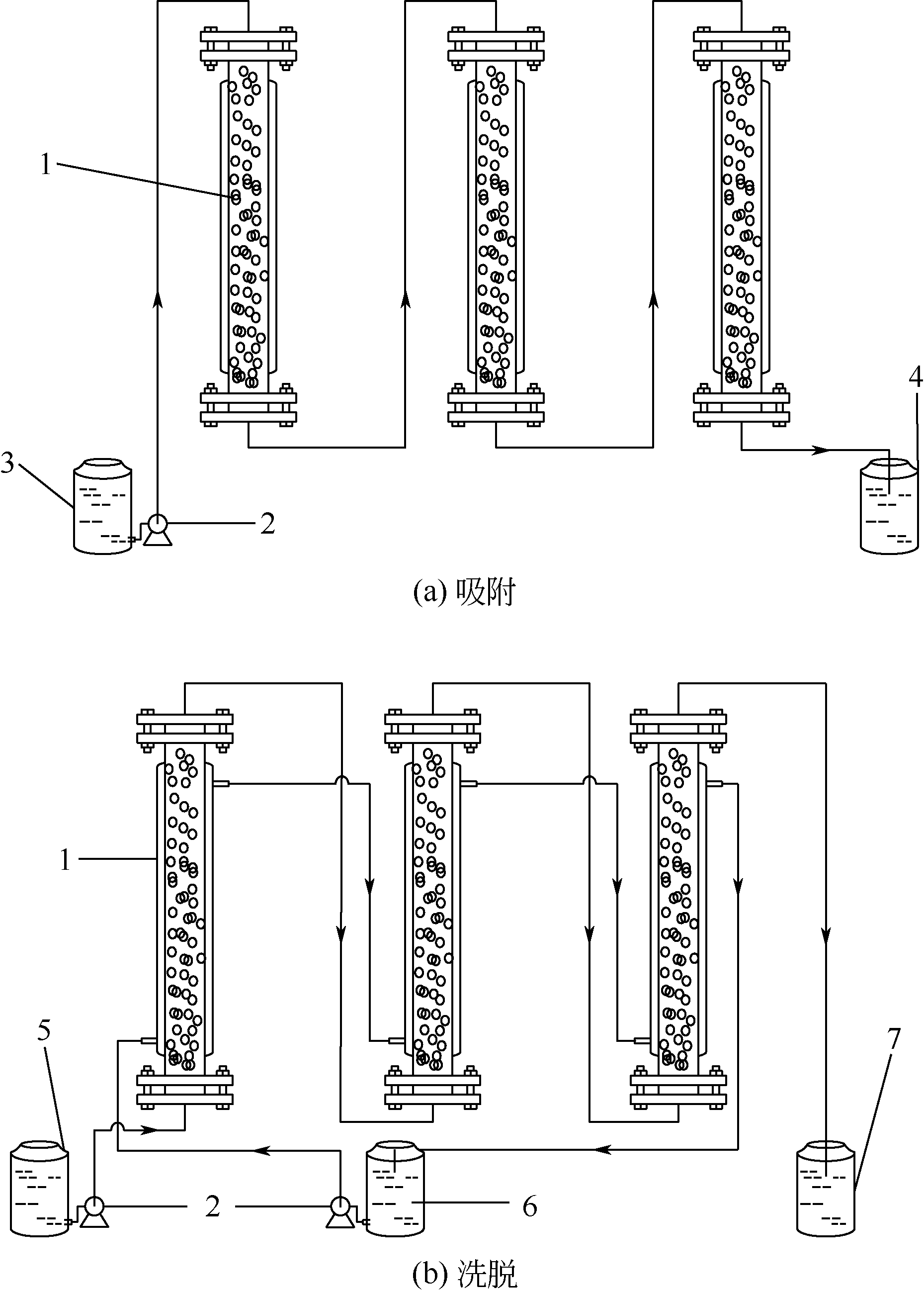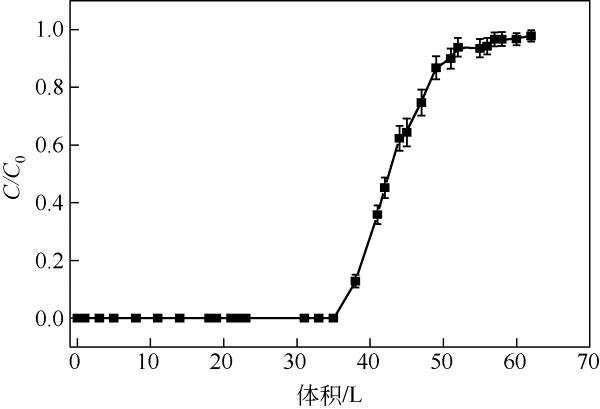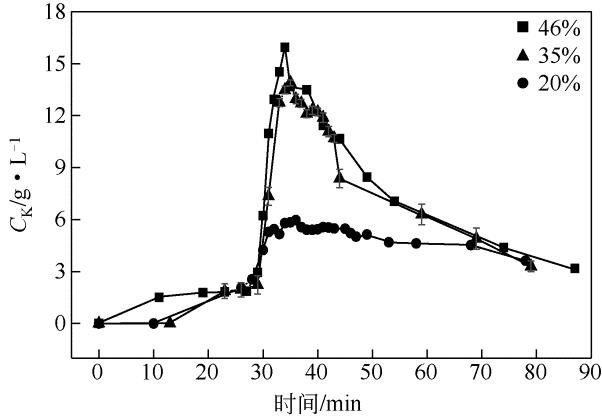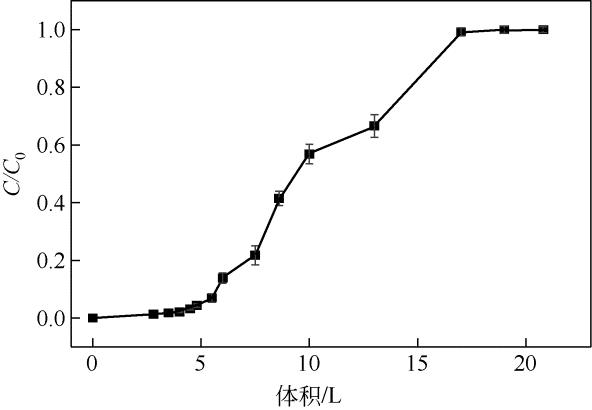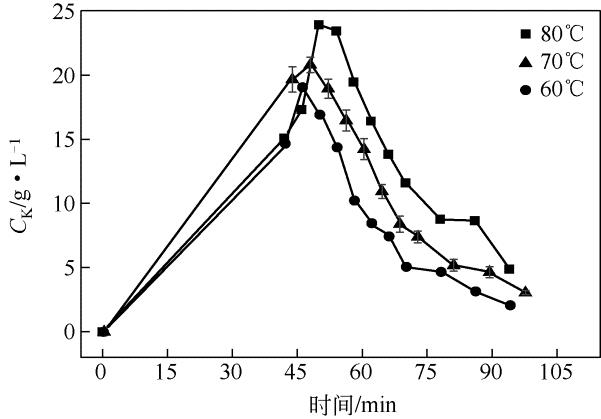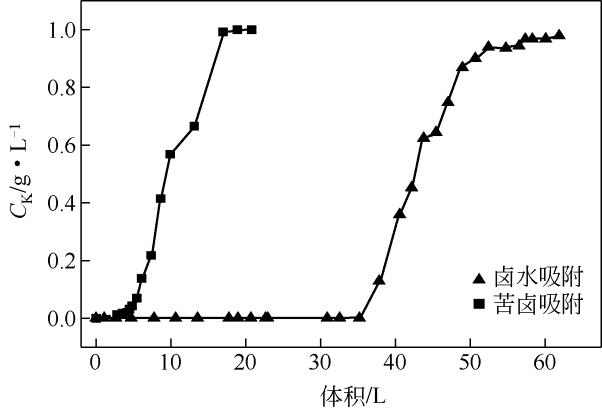| 1 |
杨能红, 孙成高, 彭建忠 .地下卤水综合利用新工艺研究[J]. 盐业与化工, 2016, 45(5): 24-27.
|
|
YANG Nenghong , SUN Chenggao , PENG Jianzhong . New technology for comprehensive utilization of underground brine[J]. Journal of Salt and Chemical Industry, 2016, 45(5): 24-27.
|
| 2 |
顾汉念, 王宁, 杨永琼, 等 . 不溶性含钾岩石制备钾肥研究现状与评述[J]. 化工进展, 2011, 30(11): 2450-2455.
|
|
GU Hannian , WANG Ning , YANG Yongqiong , et al . Research progress of preparing potash fertilizer with potassium-bearing minerals[J]. Chemical Industry and Engineering Progress, 2011, 30(11): 2450-2455.
|
| 3 |
KIELLAND J . Process for the recovery of potassium salts from solutions: DE691366[P]. 1940-05-24.
|
| 4 |
CPHILLIPS R C . Potassium and cesium recovery process: FR1556475[P]. 1969-02-07.
|
| 5 |
TAKEDA Y , YASUI A , MORITA M , et al . Extraction of sodium and potassium perchiorates with benzo-18-crown-6 into various organic solvents, quan titative elucidation of anion effects on the extraction-ability and selectivity for Na+ and K+ [J]. Talanta, 2002, 56(3): 505-513.
|
| 6 |
GOODENOUH R D . Recovery of potassium chloride from aqueous solutions: US3212863[P].1965-10-19.
|
| 7 |
TANAKA Y . Technology for removing potassium from concentrated seawater by electrodialysis and solar salt dissolved in brine[J]. Separation Science and Technology, 1993, 28(11): 2023-2034.
|
| 8 |
TANAKA Y . Method for ion exchange and separation of sodium and potassium: JP 06198163[P]. 1994-07-19.
|
| 9 |
韩立路 . CDAH-2树脂的制取及其对钾离子的富集性能[J]. 化工进展, 2009, 28(6): 1014-1018.
|
|
HAN Lilu . Synthesis of CDAH-2 resin and its enrichment behavior for potassium ion[J]. Chemical Industry and Engineering Progress, 2009, 28(6): 1014-1018.
|
| 10 |
袁俊生, 张林栋, 刘燕兰, 等 . 我国海水钾资源开发利用技术现状与发展趋势[J]. 海湖盐与化工, 2002, 31(2): 1-6.
|
|
YUAN Junsheng , ZHANG Lindong , LIU Yanlan , et al . Present status and prospect of the technology of development and utilization of seawater potassium resources in China[J]. Sea-Lake Salt and Chemical Industry, 2002, 31(2): 1-6.
|
| 11 |
YUAN Junsheng , ZHAO Yingying , LI Qinghui , et al . Preparation of potassium ionic sieve membrane and its application on extracting potash from seawater[J]. Separation & Purification Technology, 2012, 99: 55-60.
|
| 12 |
袁俊生 . 离子交换法海水提钾技术的应用基础研究[D]. 天津:天津大学, 2005.
|
|
YUAN Junsheng . Research on fundamentals in the technology of extracting potash from seawater by ion exchange method[D]. Tianjin: Tianjin University, 2005.
|
| 13 |
王光华, 董发勤, 张宝述 . 沸石离子交换的研究现状及发展趋势[J]. 中国非金属矿工业导刊, 2007(2): 18-21.
|
|
WANG Guanghua , DONG Faqin , ZHANG Baoshu . Present research state and perspective of ion-exchanging in clinoptilolite[J]. China Nonmetallic Minerals Industry, 2007(2): 18-21.
|
| 14 |
朱孔秀, 袁俊生, 于占花, 等 . 国产天然斜发沸石的物性及离子交换性能研究[J]. 化工矿物与加工, 2009, 38(7): 19-23.
|
|
ZHU Kongxiu , YUAN Junsheng , YU Zhanhua , et al . Study on the physical properties and ion exchange performance of the domestic clinoptilolite[J]. Industrial Minerals & Processing, 2009, 38(7): 19-23.
|
| 15 |
张国磊 . 超万吨海水苦卤提取硫酸钾及综合利用工程经济性分析研究[D]. 青岛:中国海洋大学, 2009.
|
|
ZHANG Guolei . Economic analysis research of project of ultra-ten-thousand tons of seawater extraction bittern comprehensive utilization of potassium sulfate[D]. Qingdao:Ocean University of China, 2009.
|
| 16 |
袁俊生, 韩慧茹 . 海水提钾技术研究进展[J]. 河北工业大学学报, 2004, 33(2): 140-147.
|
|
YUAN Junsheng , HAN Huiru . Evolution and development trend of technologies of extracting potassium from seawater[J]. Journal of Hebei University of Technology, 2004, 33(2): 140-147.
|
| 17 |
袁俊生, 纪志永 . 沸石离子筛法海水提钾技术进展[J]. 中国科技成果, 2010, 11(14): 9-11.
|
|
YUAN Junsheng , JI Zhiyong . Development trend of technologies of extracting potassium from seawater using zeolite ion-sieve[J]. China Science and Technology Achievements, 2010, 11(14): 9-11.
|
| 18 |
李雅芙, 刘素芹 . 硝酸钾生产工艺综述[J]. 盐业与化工, 2005, 34(3): 27-30.
|
|
LI Yafu , LIU Suqin . Summarization of potassium nitrate production process[J]. Journal of Salt Science and Chemical Industry, 2005, 34(3): 27-30.
|
| 19 |
闫会征 . 新型钾离子筛法海水提取硫酸钾新工艺的研究[D]. 天津:河北工业大学, 2008.
|
|
YAN Huizheng . Studies on the new technology for extracting potassium sulfate from seawater using novel ion-sieve[D]. Tianjin: Hebei University of technology, 2008.
|
| 20 |
烟伟, 黄西平, 张琦, 等 . 我国海水提钾的产业化前景[J]. 盐业与化工, 2004, 33(4): 13-17.
|
|
YAN Wei , HUANG Xiping , ZHANG Qi , et al . Prospects of industrialization on extracting potassium from seawater in China[J]. Journal of Salt and Chemical Industry, 2004, 33(4): 13-17.
|
| 21 |
袁俊生, 杨树娥, 邓会宁 . 连续离子交换技术及其在海水提钾的应用[J]. 盐业与化工, 2007, 36(3): 27-30.
|
|
YUAN Junsheng , YANG Shue , DENG Huining . The technology of continuous ionic exchange and its application in extracting potassium from seawater[J]. Journal of Salt and Chemical Industry, 2007, 36(3): 27-30.
|
| 22 |
袁俊生, 王静康 . 钠型斜发沸石Na+-K+离子交换特性研究(Ⅰ)——离子交换过程热力学特性[J]. 离子交换与吸附, 2004, 20(6): 541-547.
|
|
YUAN Junsheng , WANG Jingkang . Research on Na+-K+ ion exchange characteristic on Na-clinoptilolite(Ⅰ)—thermodynamics characteristic of the process[J]. Ion Exchange and Adsorption, 2004, 20(6): 541-547.
|
| 23 |
袁俊生, 王静康 . 钠型斜发沸石Na+-K+离子交换特性研究(Ⅱ)——过程传质模型及动力学特性研究[J]. 离子交换与吸附, 2005, 21(2): 127-136.
|
|
YUAN Junsheng , WANG Jingkang . Research on Na+-K+ ion exchange characteristic on Na-clinoptilolite(Ⅱ)—mass transfer model and kinetic characteristics[J]. Ion Exchange and Adsorption, 2005, 21(2): 127-136.
|
| 24 |
王德华, 费维扬 . 钠改型天然斜发沸石的铵离子交换平衡[J]. 离子交换与吸附, 2002, 18(4): 343-348.
|
|
WANG Dehua , FEI Weiyang . Study on characterization of ammonium exchange on natural zeolite[J]. Ion Exchange and Adsorption, 2002, 18(4): 343-348.
|
 ),李丹1,王军1,2,3(
),李丹1,王军1,2,3( ),王宗瑞4,刘建路4,袁俊生1,2,3(
),王宗瑞4,刘建路4,袁俊生1,2,3( )
)
 ),Dan LI1,Jun WANG1,2,3(
),Dan LI1,Jun WANG1,2,3( ),Zongrui WANG4,Jianlu LIU4,Junsheng YUAN1,2,3(
),Zongrui WANG4,Jianlu LIU4,Junsheng YUAN1,2,3( )
)

